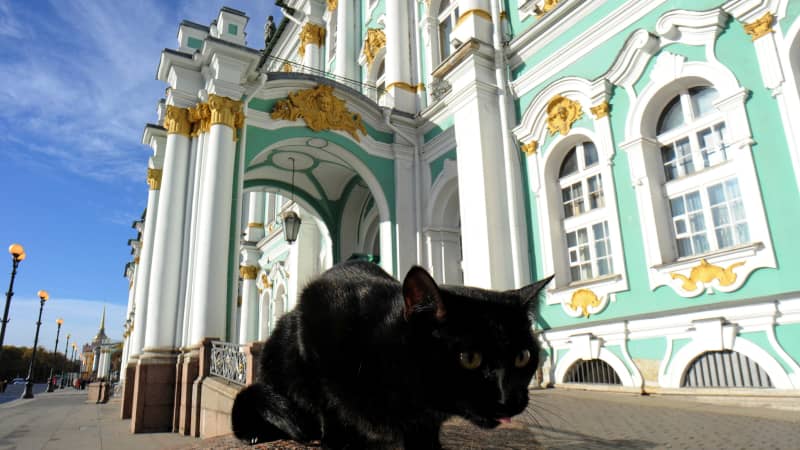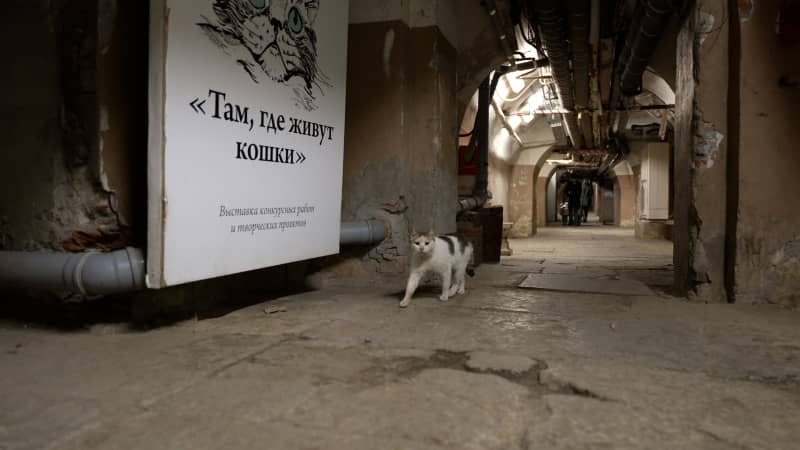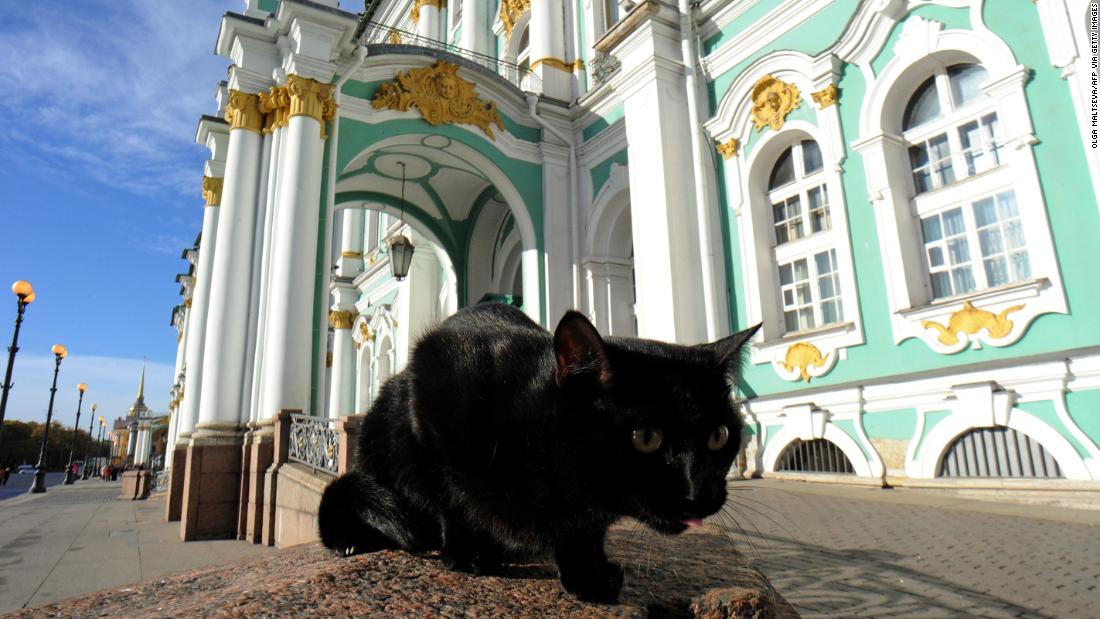(CNN) — While you’re strolling the grand halls of the State Hermitage Museum, in St. Petersburg, Russia, you might hear the faint sound of a meow coming from pipes below.
Roaming the sprawling basement of what was once the Winter Palace — the official residence of Russia’s ruling tsars — are nearly 50 cats who are treated like royalty. Down in the main room (the “koshachiy dom,” or “cat’s house”) they are fed and cared for by the staff at the Hermitage, with veterinarians on call.
The palace also has a special room for the more anti-social cats that prefer little contact with their fellow felines. Then there are the ones who meander the halls of the basement, lying on large pipes and trotting freely about the nooks and crannies of the palace.
The Hermitage even has a dedicated press secretary for the cats, Maria Haltunen. Though they are not allowed into the galleries and are rarely seen by the public, Haltunen says they remain popular.
“Maybe (it’s) because they are so gentle, maybe because of the strange combination of huge museum and pretty cats,” says Haltunen, who happens to be allergic to the animals.

A black cat sits in front of the Hermitage Museum.
Olga Maltseva/AFP via Getty Images
‘Guardians of the galleries’
Today, the Hermitage Museum consists of five buildings open to the public — with the Winter Palace as the centerpiece. The nearly three-century-old building has been home to cats since the beginning. Empress Elizabeth I ordered by decree that cats be brought all the way from the city of Kazan, roughly 1,200 kilometers (746 miles) southeast of St. Petersburg, to catch mice in the palace basement.

The State Hermitage Museum in St. Petersburg at sunset.
Julian Finney/Getty Images
Strolling through the museum is like dancing in the footsteps of Russian tsars. Visitors can move through the crests and coat of arms room into the military gallery and then arrive at the throne room, standing in front of what was quite literally the seat of power for the Romanov dynasty.

The Throne Room at the Hermitage Museum, the seat of power for generations of Russian tsars.
Kev Broad/CNN
The museum through the eyes of its director
The current director of the Hermitage Museum, Mikhail Piotrovsky, knows every inch of the palace. His father was the director for nearly 40 years; Piotrovsky grew up wandering the halls.
“It is an encyclopedia of world art and culture. It is encyclopedia of Russian history,” Piotrovsky tells CNN. “No other museum has such a combination of beautiful views and beautiful places.”
Piotrovsky says his favorite spot is always changing. He loves that the art and artifacts are not housed in a “white cube,” like the minimalistic backdrop of many of the world’s art museums, but instead on display amid the grandeur of a palace.
While the director insists everything in his museum is a must-see, one of the big draws is the famous Peacock Clock, one of Catherine the Great’s acquisitions. From its perch overlooking the gardens, the gilt-bronze clock consists of three life-sized, moving mechanical birds.
During a recent visit to the Hermitage, CNN’s Richard Quest (left, standing) was able to see the clock in action.
“The peacock is the bird of paradise, gardens are the symbols of paradise in a way,” says Piotrovsky. “It makes a kind of small paradise inside the museum.”
The Soviet Union and the resurgence of cats to the Hermitage
The museum decided to take in some of the stray cats, adding to the few felines left in the basement at the time.
Piotrovsky says his thinking was to “give (people) a symbol of humanity, a symbol of people’s love to the animals.”
But, he adds, “not everybody liked it. Not everybody likes the smell of cats.”

A cat prowls the basement of the museum, looking for mice.
Kev Broad/CNN
To this day, the palace cats faithfully carry out their mice-catching duties — even the eldest cat, at 22 years old.
“Well, if mice would pass close to our cats — they will catch,” says Haltunen. “They do their job very well.”
With cats in the basement and art above, the museum draws visitors from every corner of the world. During the early stages of the pandemic, the Hermitage’s works were only available to view online. But Piotrovsky says he believes that people now recognize the importance of seeing the collection in person, in all its majesty.
“I think it is a great symbolic museum,” he adds, noting that the museum has endured wars and political upheaval throughout the centuries. “No other museum, frankly, has such a history as the Hermitage.”
CNN’s Richard Quest and Robert Howell contributed to this story.
